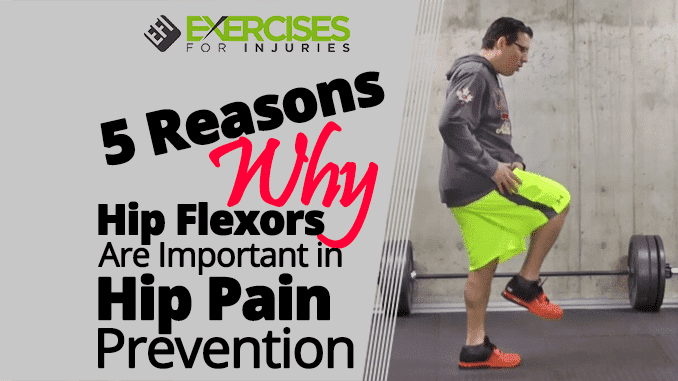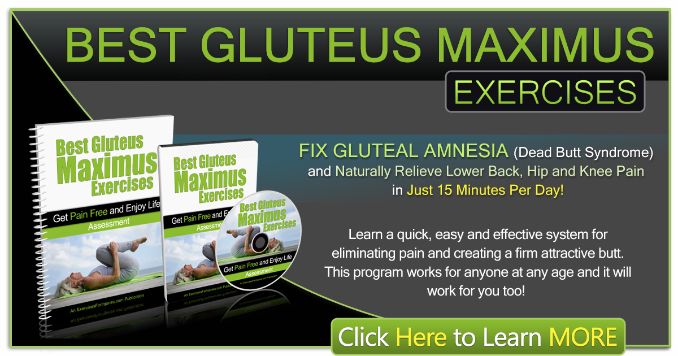
Many people assume that hip pain is caused by a lack of flexibility. However, the cause of most hip flexor pain is actually due to muscle imbalance and improper movement. The hip flexor prevention is important for helping you maintain proper weight distribution and ensuring your back stays balanced while moving. If they become inhibited, they can lead to many problems such as lower back pain, hiatal hernia, and more. Learn about the importance of the hip flexors prevention on common causes of pain and how you can keep these muscles strong and healthy so you’ll never have to suffer from hip flexor pain again.
#1 Muscle For Hip Pain Prevention
CLICK HERE to watch the YouTube video.
What are Hip Flexors?
To bend your hips, you need flexing muscles in your thighs and knees. The hip flexors are a group of muscles that help control this movement from the pelvis up through the thigh and knee joint that is why it is important to know the hip flexor prevention. Sitting for an extended period or all day long shortens these muscles, which results in decreased power when using them.
This condition has several effects on your body, including pain in the joints and lower back. Hyper lordosis is especially problematic for those people who sit most of their day at a desk because it increases stress to the spine as you rise from sitting or lean forward while typing, which can lead to future symptoms such as bone loss that cause curvature. Employers should recommend physical activity during breaks, such as standing desks, to prevent hyper lordosis and its negative consequences among workers.
Injuries
Hip flexors are a common site of injury as they can be overstretched and overused during certain activities, such as while playing soccer, football, or dancing. However, if you get the muscle too tight by straining it with exercises like martial arts or bicycling then you would risk injuring yourself further. Other symptoms of tightness include:
- Sharp pain
- Cramping
- Stiffness
- Tugging sensation
- Difficulty in jumping, sprinting, or kicking
- Tenderness or pain when walking upstairs
Hip flexor pain can also be caused by poor posture, walking habits, and general overuse. In addition to this list of causes, arthritis may cause hip flexor pain since that is where the ligaments attached to your joint connecting it with your femur (thigh bone) are located.
1. Knee drives
The hip flexors play a key role in running. They play an important role when it comes to knee drives, pulling the knee forward, and bringing the leg back. If there is tightness in the hip, it will affect how much resistance or how far back your leg can be brought back.
2. Balance
When there is balance in the hip flexors, they work with the gluteus maximus in order to help with performance and decrease the risk of injury. If the hip flexors are tight, they affect the gluteus maximus, which can lead to injuries like knee pain, back pain, and S.I joint pain.
3. Core function
Balanced hip flexors help in a core function, providing rigidity in the abdominal area to improve performance. Core function also helps in injury prevention, minimizing unnecessary stress on injured areas. Poor core function can lead to knee pain, back pain, and hip pain.
4. Squat depth
Hip flexors play a role when it comes to squat depth, raising out of the squat, and exploding out of the squat. If you have tight hip flexors, it will be difficult to get into a deep squat position. You might also shift your weight more forward on the midfoot and on the toes. This leads to unnecessary stress in the knee, irritating the knee and causing knee injury or full-blown constant knee pain.
5. Stability in the femur or thigh bone
The hip flexors provide stability in the femur or thigh bone but there is a way to do hip flexor prevention. If there is poor balance and tightness, the femur is pulled forward, affecting the way you squat. This could lead to pinching when you squat deep.
Everything starts at the hips. This is the point where your natural range of motion meets the challenge of gravity. Your hip flexors are the same muscles used for a squat and are key to balance, movement, and stability. When you feel a hip flexor injury, check your sitting posture and make sure it’s not making your hip flexors work overtime. If you are experiencing pain from your hip flexors, try the simple hip flexor prevention exercise mentioned above, it will surely help you!
If you want to improve the activation, endurance, and strength in your Gluteus Maximus, then click here to check out the Best Gluteus Maximus Exercises program.


